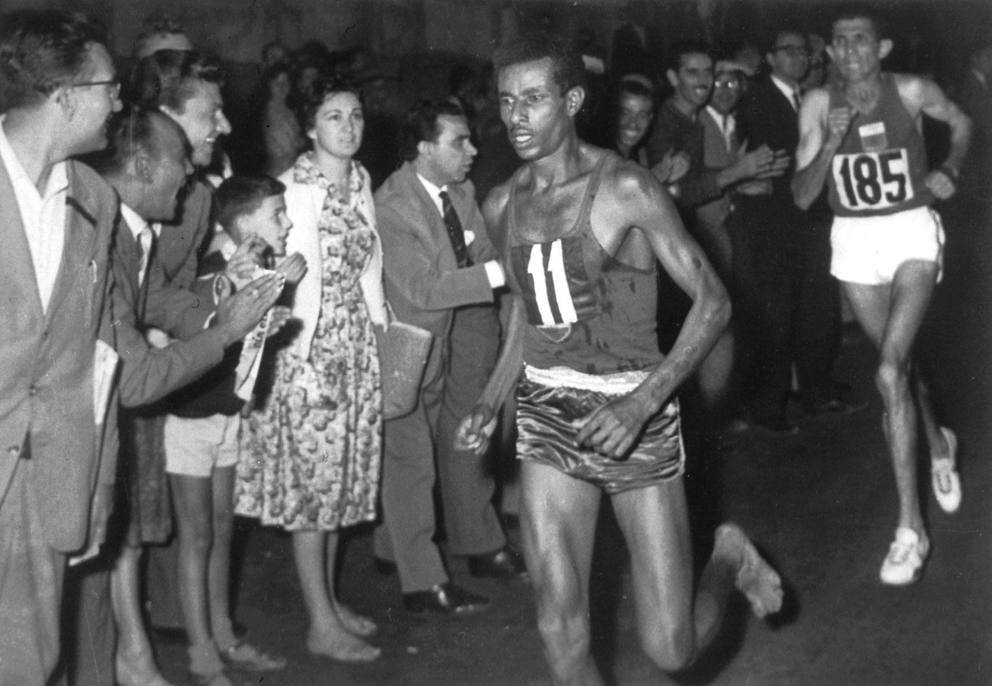The 1960 Olympic Games were held in Rome, Italy. A record 5,348 athletes from 83 countries competed. The Soviets again topped the medal tally, with 103 medals (43 gold) to the USA 71 medals (34 gold). See the 1960 Medal Table.
Trivia
- The Rome Olympics in 1960 was the first Olympics covered by U.S. television by CBS, and the first covered by television worldwide.
- Ethiopian marathoner Abebe Bikila won the marathon, running barefoot, and became the first black African to win a gold medal. He successfully defended his title four years later in Tokyo, this time wearing shoes.
- 18-year-old boxer Cassius Clay, later to be known as Muhammad Ali, was the light heavyweight boxing champion.
- American Wilma Rudolph won three gold medals in Track and Field running events.
- At the Rome Olympics on August 26, 1960, 23 year old Danish cyclist Knud Enemark Jensen collapsed during the 100 km team time trial, fatally fracturing his skull. The autopsy showed he had taken amphetamines and Roniaco. Competing in 93°F (34°C) heat, the official cause of death was heat stroke.
Sports at the 1960 Olympic Games
- Aquatics
- Athletics (Track and Field)
- Basketball
- Boxing
- Canoeing
- Flatwater
- Cycling
- Road
- Track
- Equestrian
- Dressage
- Eventing
- Show Jumping
- Fencing
- Field Hockey
- Football (Soccer)
- Gymnastics
- Modern Pentathlon
- Rowing
- Shooting
- Weightlifting
- Wrestling
- Freestyle
- Greco-Roman
Olympic Games Nutrition in Rome 1960
The food supplied for the athletes at an Olympic Village needs to cater to a diversity of sports, cultures, ages and special dietary needs. Below is some information about the Olympic Village food service and menu for the Games in Rome 1960. We have more pages about Olympic Village nutrition with links to information about the food supplied at other Olympic Games.

- 1960 Rome Dining Halls

At the Rome Olympics in 1960, service in the Dining Hall was like that at a restaurant. Tables were set by waiters, who also put out glasses with water carafes and serviettes. Crockery and cutlery were collected once meals were finished.
There were ten restaurant pavilions, situated on both sides of the Viaduct of Corso Francia measuring 36 × 34 meters, constructed on supporting structures in cement with walls in tiles and large glass panes, covered with light metallic wire structure and corrugated iron; intentionally placed one against the other to allow the supply of provisions by the single entrance corridor for both restaurants. Each had a central kitchen, two canteen rooms, refrigerating plant at one end and hygienic installations at the other.


